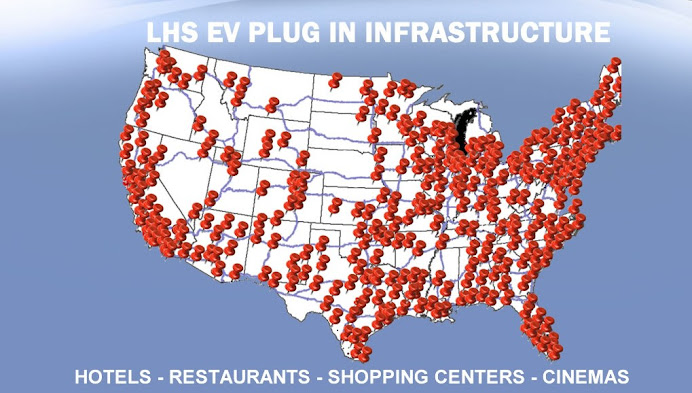.jpg) Having honed the modern engine to the point where it is going to take an enormous change (camless valve activation, for example) to further the economy cause, the next logical step is the hybridization of the powertrain.
Having honed the modern engine to the point where it is going to take an enormous change (camless valve activation, for example) to further the economy cause, the next logical step is the hybridization of the powertrain.There are two main types of hybrid systems. The mild hybrid uses the electric side to supplement the gasoline engine. As such, it cannot drive the vehicle on its own. These systems, such as that in the Mercedes-Benz S400 do have a place in the near term.
However, it is the full-on hybrid that is the future of the breed. The fact it can motivate the vehicle using the gasoline engine, electric motor or a combination of both power sources is the key advantage.
A growing number of hybrids share the same basic syste: the Two-Mode hybrid, a system used by BMW, General Motors and Mercedes-Benz. On paper, this system has the potential to cut fuel consumption by 40% in the city and deliver a 20% to 25% overall city/highway improvement when compared with a similar gasoline-only vehicle.
The keys to the Two-Mode system are a large battery and a complex transmission. The latter not only houses two electric motors, it integrates a four-speed automatic with low-and high-speed electric continuously variable transmission modes. Yes, it is a complex piece of engineering, but that does not affect the manner in which it works or, more importantly, how it drives.
While much of the Two-Mode system is more or less common between the various manufacturers, as each developed its own operating logic, the systems have slightly different slants and driving characteristics. In GM's case, the Silverado and its Two-Mode system rely on a 300-volt battery and a 6.0-litre V8 that uses cylinder deactivation (it shuts down four of the cylinders when loads are low) and something called late intake valve closing (also known as the Miller cycle). This cycle is rarely used in conventional cars and trucks because the fuel efficiency gains (between 10% and 20%) come with a noticeable drop in performance. Here, however, the electric side more than compensates for the shortfall– the Silverado boasts a net system output of 332 horsepower and 367 pound-feet of torque, which gives the 4×4 model a towing capacity of 2,676 kilograms. The fuel economy numbers tell the other side of the story. The Silverado 4×4 with a 5.3L gas-only V8 (315 hp and 338 lb-ft of torque) consumes 14.4 litres per 100 kilometres in the city and 9.5 L/100 km on the highway. The Silverado Hybrid returns 9.8 and 9.1 L/100 km, respectively.
Mercedes' take on the Two-Mode system combines a 288-volt nickel metal hydride battery with the Two-Mode transmission and a 3.5L V6 that delays the closing of the intake valve to improve efficiency. The V6 is rated at 275 hp and 258 lb-ft of torque– throw in the electric side and the ML450's net system output is 335 hp and 381 lb-ft of torque. The design also allows the ML to be driven at speeds of up to 55 km/h on electric power alone.The X6, which is BMW's first use of the Two-Mode system, is the world's most powerful hybrid. It marries the complex transmission to a 4.8L twin-turbo V8 gas engine. The net output is 478 hp and 575 lb-ft of torque– now, that's what you call tire shredding. It also gives the X6 the wherewithal to run to 100 km/h in 5.4 seconds, while returning a claimed average fuel economy of 9.9 L/100 km.
As is obvious, BMW uses the electric power more for performance than outright economy benefits.The advantage of the hybrid has not been lost on Porsche. The Cayenne S Hybrid uses a 3.0L supercharged V6 (borrowed from Audi) and marries it with a full-on hybrid system (very different in nature to the Two-Mode) that can be driven at speeds of up to 60 km/h. Porsche claims an output of 380 hp and 427 lb-ft at just 1,000 rpm. The caveat here is that Porsche adds the electric motor's 47 hp to the engine's 333 hp. As the engine and electric motor do not produce peak power at the same time, the actual output is likely to vary from the published number. Notwithstanding, there's enough power to put the hybrid's performance right up there with the V8-powered Cayenne S but with the fuel economy of a V6 engine. This powertrain will eventually trickle down to the Panamera.
The next step is the plug-in hybrid. Charging the battery overnight increases its electric-only capacity. This combined with larger, more efficient batteries will pave the way to the future.
Any look at the future of the powertrain would not be complete without the Chevrolet Volt. It is not really a hybrid in the strictest sense because the primary power source is the electric motor — the gasoline engine is along for the ride to extend the driving range. When the battery has given its all, the gas engine comes to life and drives a generator, which then powers the electric motor. If the Volt is as successful as it deserves to be, the range-extending hybrid will catch fire in a hurry.
Source : Kelown, March 12th, 2010
Source : Kelown, March 12th, 2010

Aucun commentaire:
Enregistrer un commentaire